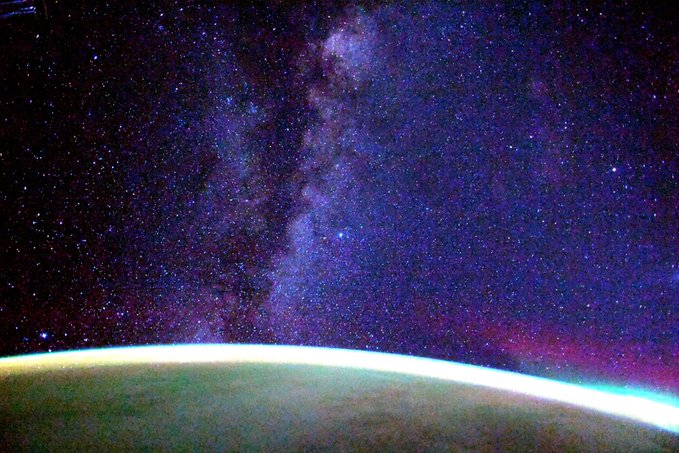
Astronaut Soichi Noguchi has posted a beautiful shot of the Milky Way from his unique vantage point on the International Space Station (ISS). The stunning photo also offers a glimpse of Earth about 250 miles below the orbiting outpost.
The Japanese astronaut quickly emerged as the resident photographer among the station’s current crew after arriving there last year, regularly posting dramatic images of space, the moon, and different locations on Earth.
Many of the shots are captured from the station’s seven-window Cupola observatory, which gives visiting astronauts an expansive view of their surroundings. More recently, several ISS crew members have been posting pics taken through a window on SpaceX’s Crew Dragon Resilience spacecraft, which is currently docked at the station.
Here’s a recent effort snapped from Resilience by NASA astronaut and current ISS crew member Mike Hopkins. The American astronaut’s comment about a “new home” refers to a recent flight maneuver that moved the capsule from one docking port to another in readiness for the arrival of other spacecraft.
Stunning. I don’t know how else to describe the nighttime views from the eyes of spaceship Resilience, located at her new home on “top” of @Space_Station. pic.twitter.com/WmDWZsrWKe
— Mike Hopkins (@Astro_illini) April 8, 2021
Of course, you don’t have to be on the ISS to get amazing photos of space. This handy Digital Trends guide explains how you can capture breathtaking imagery from right here on terra firma.
Earth shots
Keeping with the photography theme, NASA recently showcased its top 20 photos of Earth (below) captured over the years by different astronauts visiting the space station. The impressive photos include everything from gorgeous landscapes to sprawling cities, while several images highlight some of the environmental challenges currently facing our planet.
Noguchi doesn’t have too long left to enjoy his space photography. He’s been at the ISS since November 2020 and is set to return to Earth with Hopkins, Victor Glover, and Shannon Walker aboard Crew Dragon Resilience at the end of this month. Three new crew members arrived aboard a Russian Soyuz spacecraft at the end of last week, so there are currently 10 people aboard the station.
NASA’s Kate Rubins and Roscosmos’s Sergey Ryzhikov and Sergey Kud-Sverchkov will also depart the ISS in the coming days after a six-month stint in space, leaving room for four Crew-2 astronauts who will arrive on another Crew Dragon capsule later this month. Yes, it’s a very busy month for the International Space Station.
Editors' Recommendations
- China’s space station was hit by space junk
- The first views of the eclipse are coming in, and they’re stunning
- Around-the-clock 4K Earth imagery to be streamed from ISS
- Watch SpaceX’s Starship burn brightly as it hurtles toward Earth
- How to watch SpaceX Crew-7 return to Earth this week


